Siempre que hablo con Pablo Campra previo a publicar un artículo me insiste una y otra vez en la necesidad de contrastar hasta la ![]() saciedad antes de llegar a una conclusión. Bajo esta premisa científica me adelanto a este buen amigo que está enfrascado en este momento en su laboratorio de la Universidad de Almería en un proyecto conjunto con la firma almeriense Kimitec Group para determinar la posible relación quimio-preventiva antitumoral existente entre el consumo de tomate y el empleo de micorrizas durante su cultivo.
saciedad antes de llegar a una conclusión. Bajo esta premisa científica me adelanto a este buen amigo que está enfrascado en este momento en su laboratorio de la Universidad de Almería en un proyecto conjunto con la firma almeriense Kimitec Group para determinar la posible relación quimio-preventiva antitumoral existente entre el consumo de tomate y el empleo de micorrizas durante su cultivo.
Interesante y apasionante tema. Al menos así me lo parece si pretendemos vincular a la salud humana el consumo de frutas y hortalizas. Precisamente ésta es una de las cuestiones que se debaten esta semana en Barcelona en el marco del II Congreso Internacional de Bioeconomía, Cajamar Food & Future, que se celebra en el Auditorio Científico de la capital catalana.
“Un tomate que además de hidratarme, y me nutra, mantenga la acción quimiopreventiva de la agricultura tradicional de suelos vivos”, me comentaba Félix García, CEO de Kimitec Group, antes de viajar a Barcelona, “el suelo tiene que estar en juego en ese equilibrio medio-planta-suelo. Sería irresponsable sacar al suelo del juego”.
Ojo, porque estamos hablando de cómo la nutrición vegetal tiene su eco en la nutrición humana… y en su potencial quimiopreventivo de numerosas enfermedades, entre ellas el cáncer (distinguir entre valor meramente nutricional y valor funcional o quimiopreventivo). Bueno para la planta, bueno para el consumidor. Se me antoja, a priori, que éste es el marketing que necesita el sector hortofrutícola para reivindicarse al más alto nivel. Y para ello Kimitec ha fichado a Pablo Campra para obtener más evidencias científicas de dicha relación entre alimentación y cáncer. La hipótesis de trabajo es que el empleo de distintos probióticos (hongos, bacterias, etc) para mejorar la calidad de los suelos redundará en una mejora de los frutos y en el efecto sobre la salud. Esta es la cadena de causas-efectos objeto de análisis científico.
Actualmente en el laboratorio de Tecnología de Alimentos de la UAL trabaja Campra con Yolanda Rodríguez, investigadora de Kimitec Group, en un estudio que evalúa en fase pre-clínica la acción quimio-preventiva sobre el cáncer de colón del consumo de tomate en el que se han empleado micorrizas y diferentes bacterias. De manera preliminar se ha testado un incremento de en torno al 10% de la acción quimiopreventiva (reducido la proliferación de células tumorales) de aquellos tomates cultivados con micorrizas y diferentes bacterias, frente a otros tomates en los que no se han empleado dichos microorganismos. Además de tomate, también se analizan resultados en arándano, espárrago verde, fresón, pimiento, pepino y ajo.
“En el futuro iremos ampliando a más productos agrícolas y a diferentes líneas tumorales, pero este análisis es específico de colon. Iremos estudiando la mejor acción quimio-preventiva según hortalizas y tumores”, señalaba Félix García, para añadir a continuación que en el futuro continuarán estos trabajos de investigación en el centro de biotecnología que la empresa está construyendo en el Poniente almeriense.
Cómo la agricultura y la microbiología del suelo pueden ayudar a la salud humana. No es igual cultivar tomate en un suelo agrícola castigado y pobre que hacerlo en un suelo repoblado con hongos y bacterias, con riqueza de microorganismos beneficiosos. Esa diferencia, ese valor funcional añadido, redunda en beneficios para la salud humana. Campra me explicaba que “en último término lo que estamos investigando es cómo puede transmitirse la salud del suelo a la salud del cuerpo humano, mediante una compleja cadena de transferencia de energía vital o COHERENCIA biofísica a través del enriquecimiento de los vegetales en fitoquímicos con actividad biológica”.
En definitiva, se evalúa un sistema agrícola en el que se desinfecta el suelo y no hay una repoblación versus un sistema en el que tras la desinfección se repuebla el suelo con microorganismos.
Poco a poco lo iremos contando según avancen los resultados y pasen de preliminares a definitivos. De momento, vamos por el buen camino.
Mycorrhizae and the consumption of tomato on human health
Whenever I talk to Pablo Campra before publishing an article he repeatedly emphasizes, again and again, the need to contrast until satiety before reaching a conclusion. Under this scientific premise, I advance to this good friend who is currently engaged in his laboratory at the University of Almeria in a joint project with Kimitec Group of Almeria to determine the possible anti-tumor chemopreventive relationship between tomato consumption and the use of mycorrhizae during their cultivation.
Interesting and exciting topic. At least that is how it seems to me if we intend to link the consumption of fruits and vegetables to human health. This is precisely one of the issues being debated this week in Barcelona within the framework of the II International Conference of Bioeconomy, Cajamar Food & Future, which takes place in the Scientific Auditorium of the Catalan capital.
«A tomato that in addition to hydrating me, and nourishing me, maintains the chemopreventive action of the traditional agriculture of living soils,» commented Félix García, CEO of Kimitec Group, before traveling to Barcelona, «the soil has to be in play in that environment-plant-soil balance. It would be irresponsible to take the soil out of the game.«
Attention, because we are talking about how vegetable nutrition has its echo on human nutrition … and in its chemopreventive potential of numerous diseases, including cancer (distinguishing between purely nutritional value and functional or chemopreventive value). Good for the plant, good for the consumer. It seems to me, a priori, that this is the marketing that the fruit and vegetable sector needs to reclaim at the highest level. And for this, Kimitec has recruited Pablo Campra to obtain more scientific evidence of this relationship between food and cancer. The working hypothesis is that the use of different probiotics (fungi, bacteria, etc.) to improve the quality of the soils will result in an improvement of the fruits and the effect on health. This is the cause and effect chain that is the object of scientific analysis.
Currently, in the Food Technology Laboratory of the UAL, Campra works with Yolanda Rodríguez, Kimitec Group researcher, in a study in the pre-clinical phase that evaluates the chemopreventive action of tomato consumption on colon cancer in which mycorrhizae and different bacteria have been used. Preliminarily, an increase of around 10% of the chemopreventive action (reduced the proliferation of tumor cells) of those tomatoes grown with mycorrhizae and different bacteria tested against other tomatoes in which said microorganisms were not used. In addition to tomato, results are also analyzed in cranberry, green asparagus, strawberry, pepper, cucumber, and garlic.
«In the future, we will expand to more agricultural products and different tumor lines, but this analysis is specific to colons. We will be studying the best chemopreventive action according to vegetables and tumors,» pointed out Félix García, adding that in the future these research works will continue at the biotechnology center that the company is building in the Poniente Almeriense.
How agriculture and soil microbiology can help human health. It is not the same to grow tomatoes in a poor and punished soil as growing them in a soil repopulated with fungi and bacteria, with a wealth of beneficial microorganisms. That difference, that added functional value, results in benefits for human health. Campra explained to me that, «in the end, what we are investigating is how soil health can be transmitted to the health of the human body, by means of a complex transfer chain of vital energy or biophysical COHERENCE through the enrichment of phytochemicals with biological activity in the plants.»
In short, an agricultural system is evaluated in which the soil is disinfected and there is no repopulation versus a system in which, after disinfection, the soil is replenished with microorganisms.
Little by little we will have results advance and go from preliminary to definitive. For now, we are on the right track.








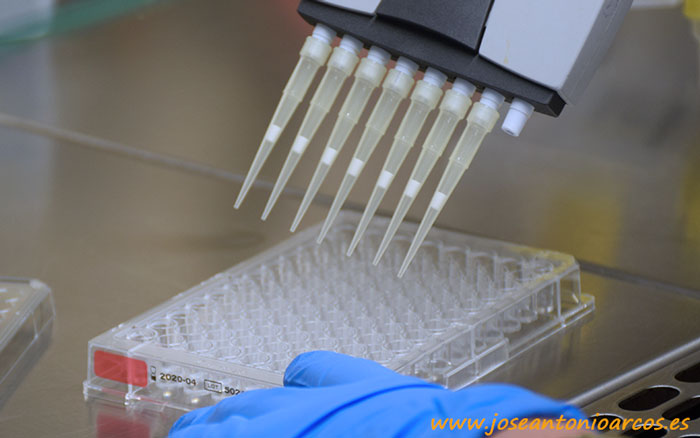

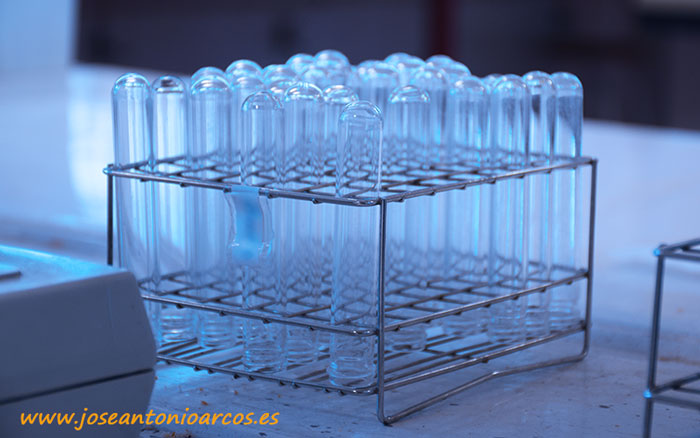
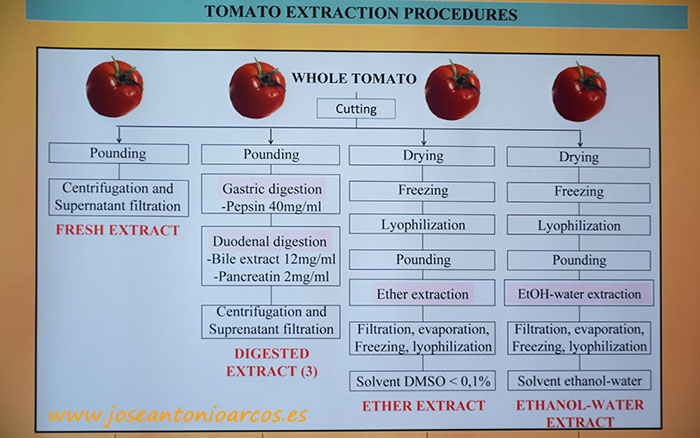

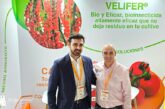

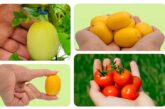
 José Antonio Arcos
José Antonio Arcos
 Ana Rubio
Ana Rubio
Un articulazo, y Campra un fenomeno, le deseo muchos existos por el bien de todos.